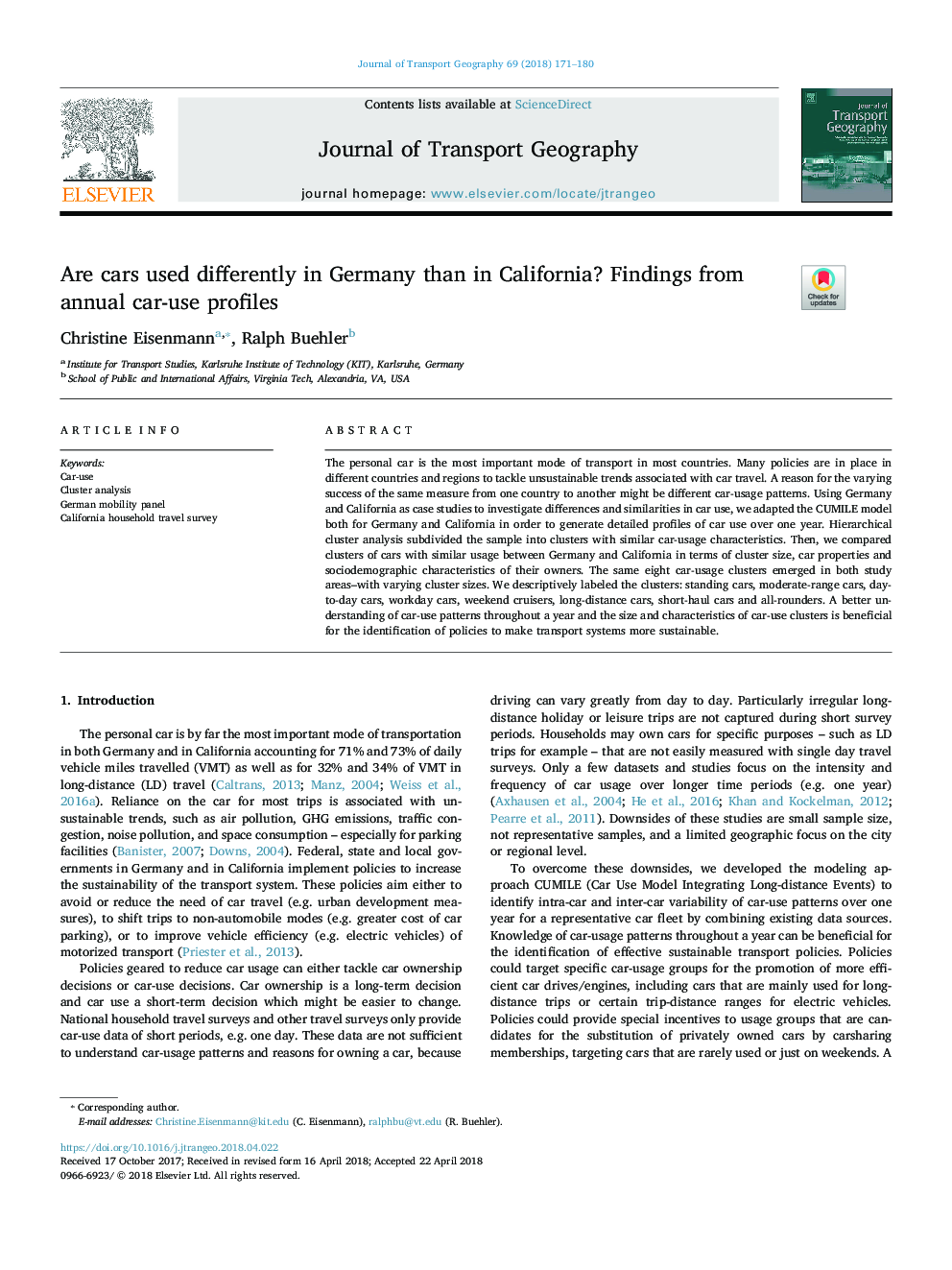| Article ID | Journal | Published Year | Pages | File Type |
|---|---|---|---|---|
| 7485064 | Journal of Transport Geography | 2018 | 10 Pages |
Abstract
The personal car is the most important mode of transport in most countries. Many policies are in place in different countries and regions to tackle unsustainable trends associated with car travel. A reason for the varying success of the same measure from one country to another might be different car-usage patterns. Using Germany and California as case studies to investigate differences and similarities in car use, we adapted the CUMILE model both for Germany and California in order to generate detailed profiles of car use over one year. Hierarchical cluster analysis subdivided the sample into clusters with similar car-usage characteristics. Then, we compared clusters of cars with similar usage between Germany and California in terms of cluster size, car properties and sociodemographic characteristics of their owners. The same eight car-usage clusters emerged in both study areas-with varying cluster sizes. We descriptively labeled the clusters: standing cars, moderate-range cars, day-to-day cars, workday cars, weekend cruisers, long-distance cars, short-haul cars and all-rounders. A better understanding of car-use patterns throughout a year and the size and characteristics of car-use clusters is beneficial for the identification of policies to make transport systems more sustainable.
Keywords
Related Topics
Life Sciences
Environmental Science
Environmental Science (General)
Authors
Christine Eisenmann, Ralph Buehler,
